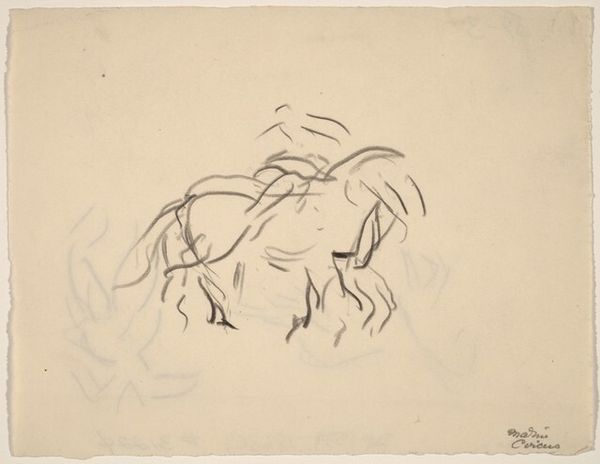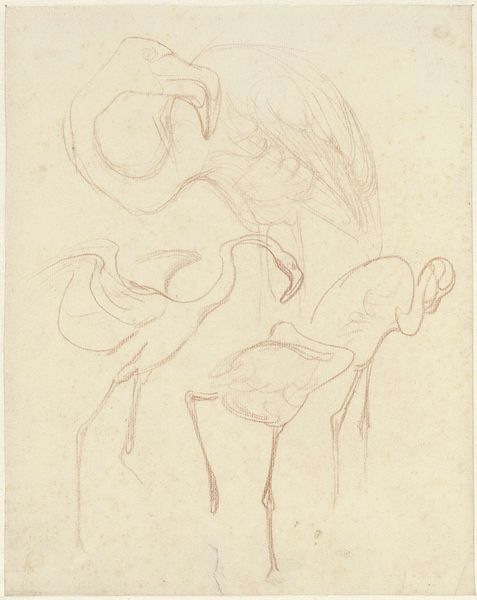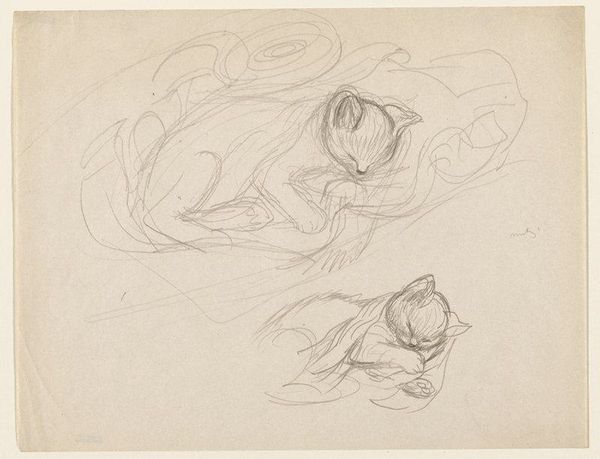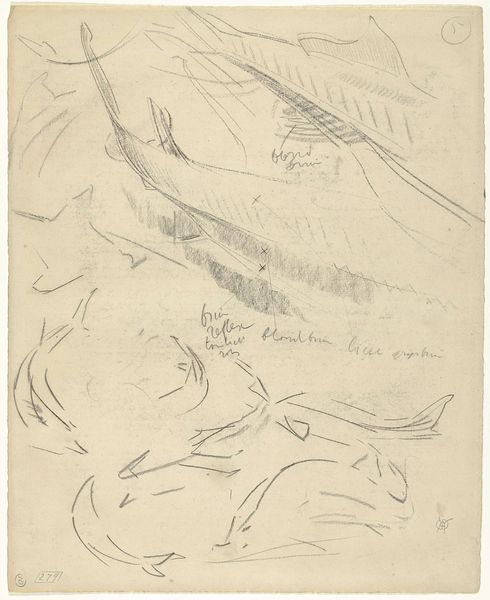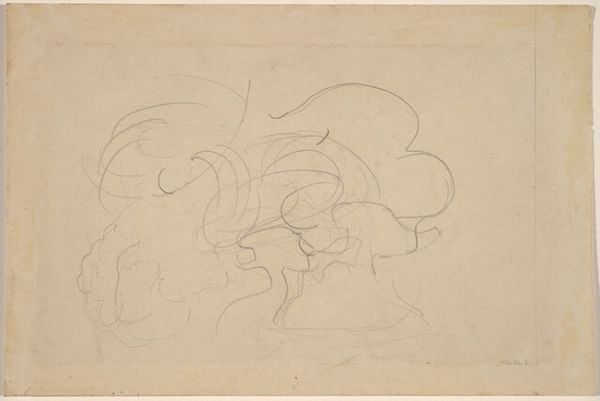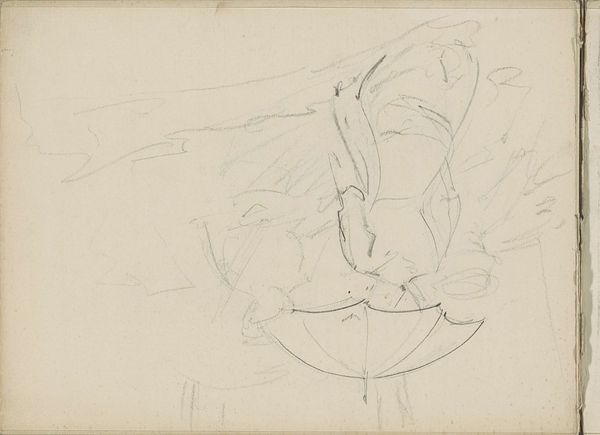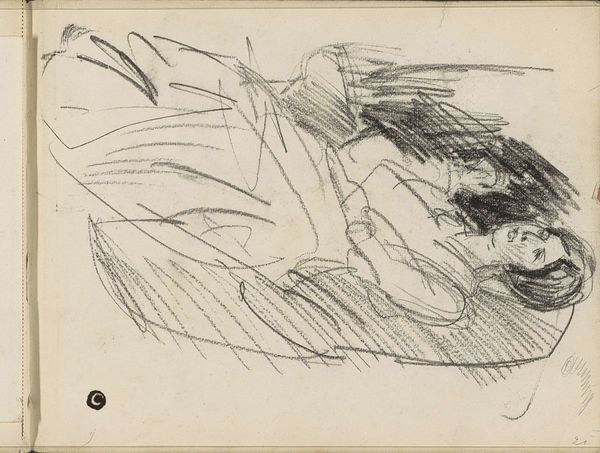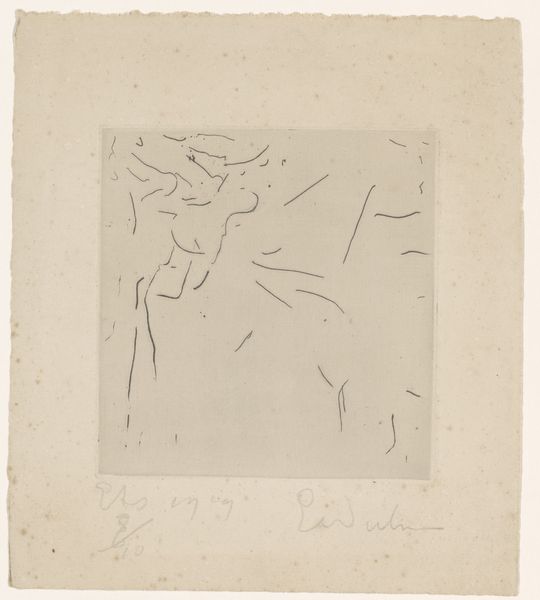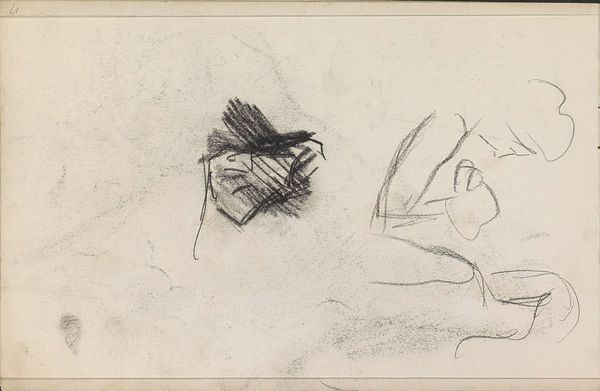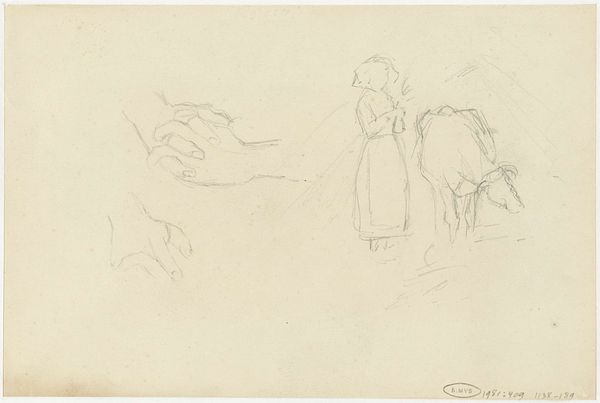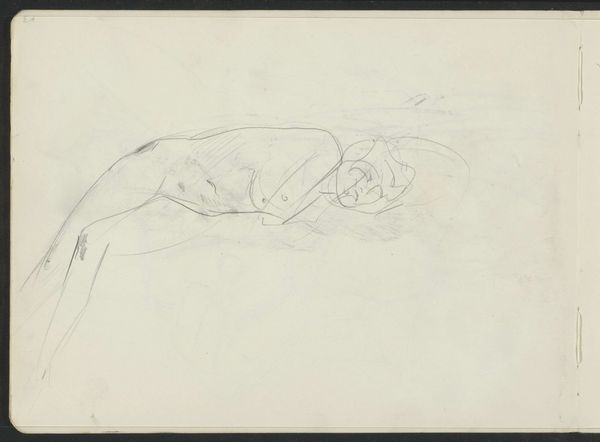![Circus Figure, Horse and Rider [verso] by John Marin](/_next/image?url=https%3A%2F%2Fd2w8kbdekdi1gv.cloudfront.net%2FeyJidWNrZXQiOiAiYXJ0ZXJhLWltYWdlcy1idWNrZXQiLCAia2V5IjogImFydHdvcmtzL2JhMmE1YWEzLTMzZTktNGJkNS1iOTViLTllMmZmNjQ2ZTI4OC9iYTJhNWFhMy0zM2U5LTRiZDUtYjk1Yi05ZTJmZjY0NmUyODhfZnVsbC5qcGciLCAiZWRpdHMiOiB7InJlc2l6ZSI6IHsid2lkdGgiOiAxOTIwLCAiaGVpZ2h0IjogMTkyMCwgImZpdCI6ICJpbnNpZGUifX19&w=1920&q=75)
drawing, pencil
#
drawing
#
ink drawing
#
figuration
#
pencil
#
line
Dimensions: overall: 12.4 x 15.9 cm (4 7/8 x 6 1/4 in.)
Copyright: National Gallery of Art: CC0 1.0
Curator: Ah, I'm drawn to this work by John Marin; it's called "Circus Figure, Horse and Rider [verso]". There’s such raw energy here! What jumps out at you? Editor: It feels tentative. Like a preliminary sketch. I can almost smell the graphite, see the hand moving quickly across the paper, deciding what to keep, what to discard. There’s something very immediate and real about seeing this type of raw artistic process. Curator: Precisely! It’s so minimal, almost haiku-like in its efficiency of line, isn't it? With just a few strokes of pencil and ink, he suggests this dynamic circus scene...The movement, the weight, even a sense of the fleeting moment…all hinted at rather than explicitly drawn. It feels playful, even. Editor: Yes, playful...But also perhaps about labour and the production of leisure, the spectacle of the circus is carefully constructed and mediated through materials, drawing instruments, and even economic exchanges, Marin would have had to purchase the materials...The paper, the pencil, the ink, they're all products of industrial manufacturing that have histories. Curator: Good point. These humble materials give rise to something seemingly effortless but deeply felt. And the “verso” element interests me too – it suggests a hidden or less formal side, like a peek behind the curtain. Editor: Right, a backside where materials and labour aren’t supposed to show through to the end result. What do you think Marin was thinking about when drawing with line only, for a circus? What does the circus, as a set of figures of bodies and trained bodies, and animals say here in an image where no single outline ever really fully becomes a solid shape? Is the whole drawing an abstraction, rather than figuration? Curator: That lack of concrete form contributes to its expressive power, doesn't it? It's almost a phantom circus, lingering in the ether of memory. The abstraction allows us, as viewers, to fill in the blanks, to complete the narrative with our own imaginations, perhaps recalling past experiences under the big top. Editor: Which comes down to sales, no? Marin hoping a collector buys and frames this ghost in their collection, that way these now-fossilized tools will still do their work, and bring capital back. Curator: Indeed, there’s more to the story that you highlight: layers of purpose and labour… Editor: Well, and for me, it's seeing the economic underpinnings of the final thing, which feels anything *but* ethereal now. Thanks for pointing me there! Curator: Thanks for guiding it down to earth!
Comments
No comments
Be the first to comment and join the conversation on the ultimate creative platform.
